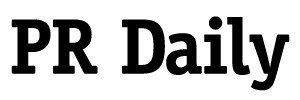Roundtable Recap: How communicators navigate the trifecta of change, crisis and growth
Communicators must continue to sharpen their ability to manage uncertainty, according to a recent roundtable of comms leaders.

Three forces loom large in business: change, crisis and growth. Each carries the potential to shape — or shake — a company’s future.
Yet, when communication leaders are left out of planning for these pivotal moments, the consequences ripple: trust erodes, compliance wavers and the culture suffers.
That was the message from a recent roundtable hosted by Ragan’s Communications Leadership Council at the Employee Communications and Culture Conference in Chicago, April 9-11. Senior communicators from a range of sectors shared their top concerns and strategies for leading through disruption.
“Ambiguity is the dirtiest word in communications,” said Mary C. Buhay, Ragan’s chief growth officer and head of Council. “Communicators must continually sharpen their skills to steer through the uncertainty that comes with change, crisis and growth. When you consider that the communications function safeguards trust in an organization throughout its life, it becomes clear that communications learning and development is a business investment.”
Communications professionals, Buhay emphasized, must continually sharpen their ability to manage uncertainty. When the C-suite understands their value, communicators gain the influence necessary to protect an organization’s reputation and help spur its growth.
Highlights of the roundtable conversation are below. Insights are unattributed to allow the group to share freely and candidly.
What keeps communicators up at night?
At the top of the roundtable, leaders aired their most pressing challenges, many of which spoke to the growing complexity of the communications role:
- Navigating rapidly evolving technology and AI tools.
- Focusing on storytelling and teaching new hires.
- Managing capacity and expectations across departments.
- Capturing internal trust while responding to external scrutiny.
- Demonstrating ROI to executive leadership.
- Staying responsive while preserving authenticity.
- Tracking and interpreting data that informs strategy.
- Deciding which issues demand a response—and which don’t.
And above all, one participant put it bluntly: “If you lose trust, you lose it forever.”
Staying vigilant amid constant disruption
Roundtable participants reviewed data about the skills that are most in demand from the 2025 Ragan Communications Benchmark Report. Among the most in-demand specializations cited by communicators: AI, followed closely by crisis and issue management.
Participants shared how they stay alert to potential emerging issues:
- Listening first, rather than reacting — a “spider web” approach that connects every part of the business.
- Leveraging AI to synthesize internal data into actionable insights.
- Creating evergreen content, such as fact-based blogs, to pre-empt misinformation.
- Maintaining a “living” resource hub for hot-button issues like DEI.
- Talking regularly with subject matter experts on cybersecurity, legislation and more.
“People want to hear from leaders during a crisis,” said one participant. “But the challenge is, some people just won’t believe you, no matter how transparent you are.”
Adapting communications for a new era
The conversation shifted to how teams are reorganizing themselves in response to shifting expectations and risks. In one organization at the roundtable, communications now reports to legal. Others described more nuanced shifts:
- Moving from internal emails to face-to-face conversations to better control narratives.
- Rebranding from “communications” to “employee engagement consultants.”
- Using more neutral language to avoid regulatory scrutiny, for example using “responsible business” instead of “equity and inclusion.”
One participant described how their CEO views communications as the “nucleus” of employee engagement — an increasingly common perspective among forward-thinking leaders.
Teams are also turning to technology and adopting new models to gain efficiency: One participant said their team adopted Scrum frameworks to better track ad hoc requests and project bandwidth.
From reactive to strategic
When the topic turned to C-suite engagement, several communicators spoke of the challenge of being heard at the highest level.
“Sometimes, you have to let leaders fail to see the value of your advice,” said one, but the extent of that approach depends on their level and the consequences of failure. The goal is to help them help themselves.
Others emphasized the importance of translating communications success into business terms:
- Tie comms efforts to KPIs that matter to the executive suite.
- Never share raw data. Always provide analysis with a clear point of view.
- Use metrics to tighten messaging and track trust scores.
- Frame communications as proactive protection, not just promotion.
One organization shared a critical example: When a breaking internal story risked going public, their comms team gave a media outlet an embargoed exclusive, thus buying time to inform employees first. The result? They avoided damaging morale and the C-suite saw firsthand the value of strategic communication.
The communicator’s mandate: clarity, credibility and continuity
The roundtable made one thing clear: Communication teams are no longer just mouthpieces. They are navigators of ambiguity, translators of strategy and the first responders to both crisis and change.
To be successful in this new era, communicators must not only protect the company’s reputation but also shape it with clarity, credibility and continuous learning at the core.
Or, as one participant put it: Comms is invited to the table, but they’re working hard to be a strategic voice and not just a fly on the wall.
Join Ragan’s Communications Leadership Council to unlock exclusive research, peer insights and expert guidance tailored to help you lead with impact.






